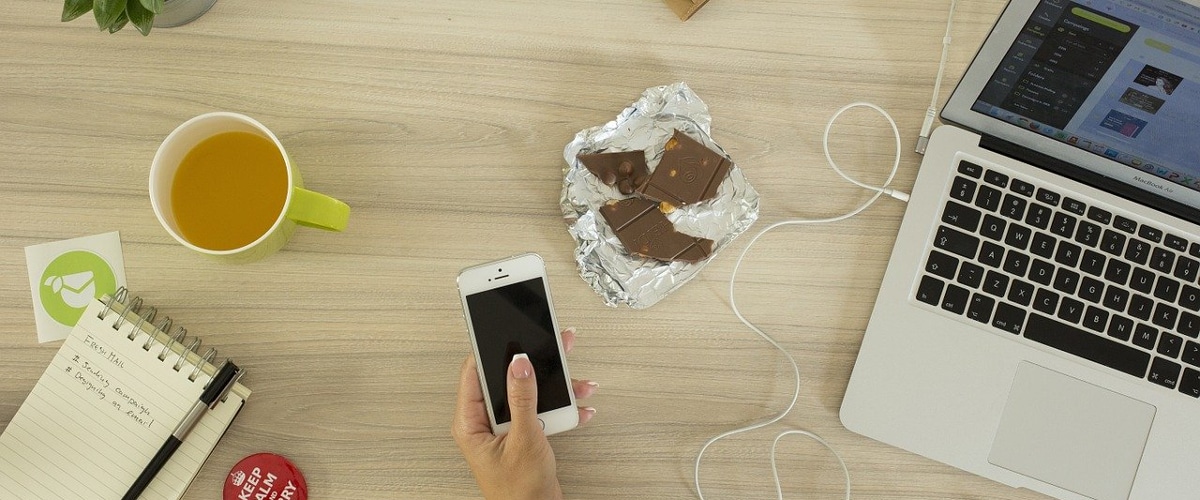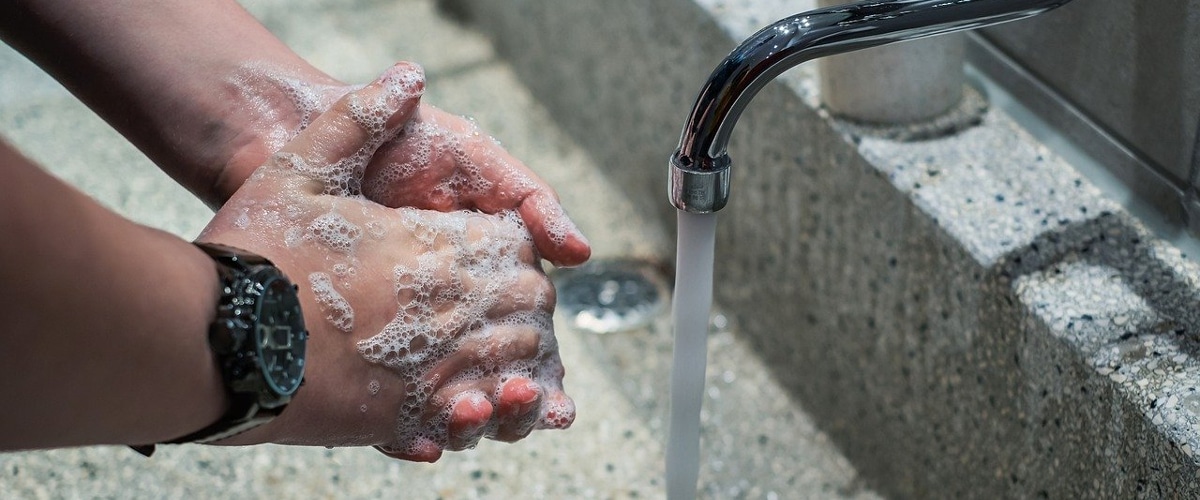
27 Mar Everything You Need to Know About Desk Hygiene
Germs live everywhere – on our hands, phones, and even on our desks. The average desk contains 400 times more bacteria than a toilet seat, research has revealed. So, how do we keep our desk hygiene under control?
In light of the new coronavirus or COVID-19, it’s become more apparent than ever how crucial it is to wash our hands and maintain good hygiene.
Research shows that bacteria cannot live outside the body for long. However, traces of a virus can still be left behind.
The government has recently advised everyone to work from home where they possibly can. And, what’s important to note is that it’s vital to maintain desk hygiene, no matter where you’re working from.
If you would like to get in touch with us to talk about your office and possible changes that can be made, please feel free to get in touch with us by calling 01223 789 234.
Clean Your Desk Regularly
Cleaning your desk is important because you are constantly in contact with it – often without realising. When you sit down, pull yourself into your desk, or just resting your hands on it – you are exchanging germs with the desk.
We recommend at least once every two days, removing everything from your desk and wiping it thoroughly – including any drawers and down the sides of the desk.
Declutter Your Desk
Along with the surface, the items sitting on your desk carry germs too. Remove anything unnecessary from your desk – not only will this minimise bacteria but it can also remove distractions and will keep your desk tidy, often increasing productivity.
Don’t Eat at Your Desk

A lot of us eat at our desks, however, it’s actually quite unhygienic. Food crumbs can end up in keyboards and spills will be more frequent. This makes a desk that isn’t cleaned regularly the perfect breeding ground for bacteria. So, why not take a break, leave the office and eat away from your desk.
Touching Your Face
Touching your face is natural; we do so when we think when we have an itch, or even just to lean on our hands when reading. Most of the time, we don’t even realise we’re doing it.
However, touching your face with unwashed hands, means your mouth, eyes and even pores become potential entry points for germs and bacteria. Therefore, it is essential to become more aware of when we touch our faces, as we’ll then be less likely to do it.
Try keeping a hand sanitiser on your desk, and regularly ensure you are cleaning your hands with soap and hot water. This will kill off any bacteria living on your hands, so when you touch your face, there is a much lower chance of falling ill.

What to consider when setting up a workspace
Posture
The way you sit or stand at your desk is as much of a safety risk as your general desk hygiene. Working hours on a desk without proper posture and physical measures in place can lead to a bad back, shoulder pain and problems with your knees.
Some measures can be taken, both in office spaces and at home, to ensure comfortable and safe working positions. These include keeping a good position, no slouching, sitting back or sitting crossed legged, along with monitoring your comfort and implementing equipment to help support you if required.
The HSE (Health and Safety Executive), a government agency, provides guidelines on how to keep a comfortable and good working position. This enables employers to carry out a risk assessment where necessary and acts as a checklist.
Monitors
Monitors should be at a slight upwards angle and in your direct eye line while sitting in an upright position. It should also be at least an arms-length away. It is also a good idea to have a monitor that can swivel and tilt to ensure that the monitor can be adjusted to suit your needs.
If the user of the screen cannot get into a comfortable position viewing at the monitor, or the swivel and tilt do not work properly, the screen may not be appropriate and may need replacing.
Any screens should also be free of any glares and reflections; if these are present the screen or desk may need to be moved for a comfortable viewing experience. If this cannot be done, shielding the monitor will also work.
Keyboard and Mouse
Your keyboard and mouse should be in line with your elbows so that typing feels natural without making you strain. If you feel any discomfort, we recommend investing in ergonomic wrist rests and mouse pads.
As keyboards age, the text on them can often begin to fade and if you’re unable to touch type, you will need to consider replacing it to minimise eye strain and errors in your work.
Something people often overlook is the speed in which a mouse works and moves about on the screen. If it is too slow or too fast, the DPI setting may need to be changed to suit the user and minimise eye strain and headaches.
Display
The display should allow for clear and readable characters, at a good resolution. The brightness and contrast on the display should also be changeable to the user’s comfort. If you experience any kind of flickering, the connecting cable may be damaged. It’s important to replace it as soon as possible so it doesn’t cause eye strain or headaches.
Chairs
It’s important for all office chairs to have a backrest to provide support. It should be adjusted to a 90-degree angle for an upright back position. Choosing a chair with arms and even a footrest can also provide added support. There are various options to choose from that can help people who suffer from back and neck pain, or if they’re tall or short, we can help source ideal solutions.
Desks
When it comes to desks, you must find the right one for you. If you suffer from backache or wish to be more active, you may wish to opt for a standing desk. They’re a great way of maintaining great posture and assisting with stress on joints, which can be common for those who sit down at their desk for eight or more hours each day.
When it comes to the colour of a desk, it’s worth considering a white or light coloured desk, as any dirt is much easier to see, allowing for more thorough cleaning and therefore, better hygiene.
Your desk is your workspace, so it should have the required space for all your equipment, including extra screens, paperwork etc. And, everything should be easy to reach.
Maintaining Hygiene Standards in Different Working Environments
Staying Healthy When Working from Home
Given the current situation, people are being asked to work from home where they can. But, how should you go about doing so in a way that keeps you physically and emotionally healthy?
It is essential to have the right equipment to work from home. You’ll need a computer and suitable desk and chair so you’re able to create something that resembles a workspace – A space you can move away from to create a cut off when you’ve finished your work. If possible, set up a workstation in a room that has a door you can close to keep work and home life separate.
Staying Healthy in Shared Offices
Sharing an office often means many places, such as toilets and kitchens, may also be shared. In these types of offices, it’s more common for cross-contamination. Therefore, maintaining good hygiene is more important than ever to protect those around you.
Wash your hands properly and regularly and continue to keep working areas clean and tidy. This decreases the chances of bringing germs into your office from shared spaces.
Staying Healthy When Hot Desking
If you are in a hot-desking-friendly office, the likeliness of cross-contamination is high. As such, to protect yourself from germs, it’s important to clean down the workspace, equipment and chair before you get settled down for the day. It’s also good practice to wipe everything down before you leave for the day too, it’s respectful and will help protect those around you, along with the person who uses that space next.
What Can Employers Do?
As an employer, it’s important to ensure the safety of your employees so they can remain productive.
It’s vital to clearly communicate health, hygiene and safety rules. Ideally, you should set these out when you hire a new member of staff and ask them to sign a document explaining that they have understood the rules and will adhere to them. You’ll also need to provide everything employees require to keep their workspace and any communal areas clean and tidy.
With regards to equipment, purchase quality desks, chairs and provide back, wrist and foot supports for staff who need them to ensure you maintain a healthy work environment. It’s also good practice to carry out risk assessments and ensure all equipment is working correctly so you’re able to address issues before an accident occurs.
If your employees are required to work from home be sure to supply laptops, desktops, mice, keyboards or any other necessary equipment they may need – ergonomic equipment is especially useful.
If you require office furniture, need help with office design or want to discuss anything we’ve mentioned in this guide contact us today.


Sorry, the comment form is closed at this time.